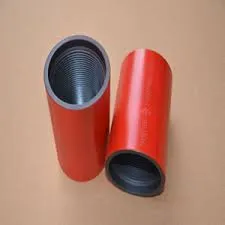- Afrikaans
- Albanian
- Amharic
- Arabic
- Armenian
- Azerbaijani
- Basque
- Belarusian
- Bengali
- Bosnian
- Bulgarian
- Catalan
- Cebuano
- Corsican
- Croatian
- Czech
- Danish
- Dutch
- English
- Esperanto
- Estonian
- Finnish
- French
- Frisian
- Galician
- Georgian
- German
- Greek
- Gujarati
- Haitian Creole
- hausa
- hawaiian
- Hebrew
- Hindi
- Miao
- Hungarian
- Icelandic
- igbo
- Indonesian
- irish
- Italian
- Japanese
- Javanese
- Kannada
- kazakh
- Khmer
- Rwandese
- Korean
- Kurdish
- Kyrgyz
- Lao
- Latin
- Latvian
- Lithuanian
- Luxembourgish
- Macedonian
- Malgashi
- Malay
- Malayalam
- Maltese
- Maori
- Marathi
- Mongolian
- Myanmar
- Nepali
- Norwegian
- Norwegian
- Occitan
- Pashto
- Persian
- Polish
- Portuguese
- Punjabi
- Romanian
- Russian
- Samoan
- Scottish Gaelic
- Serbian
- Sesotho
- Shona
- Sindhi
- Sinhala
- Slovak
- Slovenian
- Somali
- Spanish
- Sundanese
- Swahili
- Swedish
- Tagalog
- Tajik
- Tamil
- Tatar
- Telugu
- Thai
- Turkish
- Turkmen
- Ukrainian
- Urdu
- Uighur
- Uzbek
- Vietnamese
- Welsh
- Bantu
- Yiddish
- Yoruba
- Zulu
Comprehensive Guide to API Casing Sizes - Specifications & Standards
Understanding API Casing Sizes A Comprehensive Overview
The American Petroleum Institute (API) is a pivotal organization in the petroleum and natural gas industries, providing essential standards for various aspects of exploration and production. Among these standards, the API casing sizes play a crucial role in ensuring the efficiency and safety of drilling operations. This article delves into the significance of API casing sizes, their classifications, and implications for drilling practices.
Understanding API Casing Sizes A Comprehensive Overview
Casing sizes are typically expressed in inches, with common diameters including 4.5, 5.5, and 7.0 inches. The selection of casing size is dependent on several factors, including the depth of the well, the type of formation being drilled, and the anticipated pressures and temperatures encountered during drilling operations. Larger casing sizes are often used for deeper wells or in formations with higher pressures, while smaller sizes may suffice for shallower, less challenging environments.
api casing sizes

The performance of API casings is rated according to a series of specifications that include weight, grade, and coating. These specifications ensure that the casing can withstand various environmental stresses and prevent failure. For instance, different grades of casing, such as J55 or K55, indicate varying yield strengths, which correspond to the casing’s ability to resist deformation under pressure. The choice of grade is critical and is made according to the expected conditions of the well.
Additionally, API standardizes the manufacturing processes for casings to maintain quality and safety. Manufacturers must adhere to specific criteria for material composition, dimensional tolerances, and testing methods. This ensures that the casings produced meet the rigorous standards required for their application, which is particularly important in minimizing risks in potentially hazardous environments.
In conclusion, understanding API casing sizes is essential for anyone involved in the oil and gas industry. The correct selection and proper use of these casings not only affect the efficiency of drilling operations but also ensure safety and environmental protection. With the ongoing advancements in drilling technology and methods, staying informed about API standards and casing specifications is vital for industry professionals to enhance operational performance and mitigate risks associated with drilling activities.
-
Tubing Pup Joints: Essential Components for Oil and Gas OperationsNewsJul.10,2025
-
Pup Joints: Essential Components for Reliable Drilling OperationsNewsJul.10,2025
-
Pipe Couplings: Connecting Your World EfficientlyNewsJul.10,2025
-
Mastering Oilfield Operations with Quality Tubing and CasingNewsJul.10,2025
-
High-Quality Casing Couplings for Every NeedNewsJul.10,2025
-
Boost Your Drilling Efficiency with Premium Crossover Tools & Seating NipplesNewsJul.10,2025







